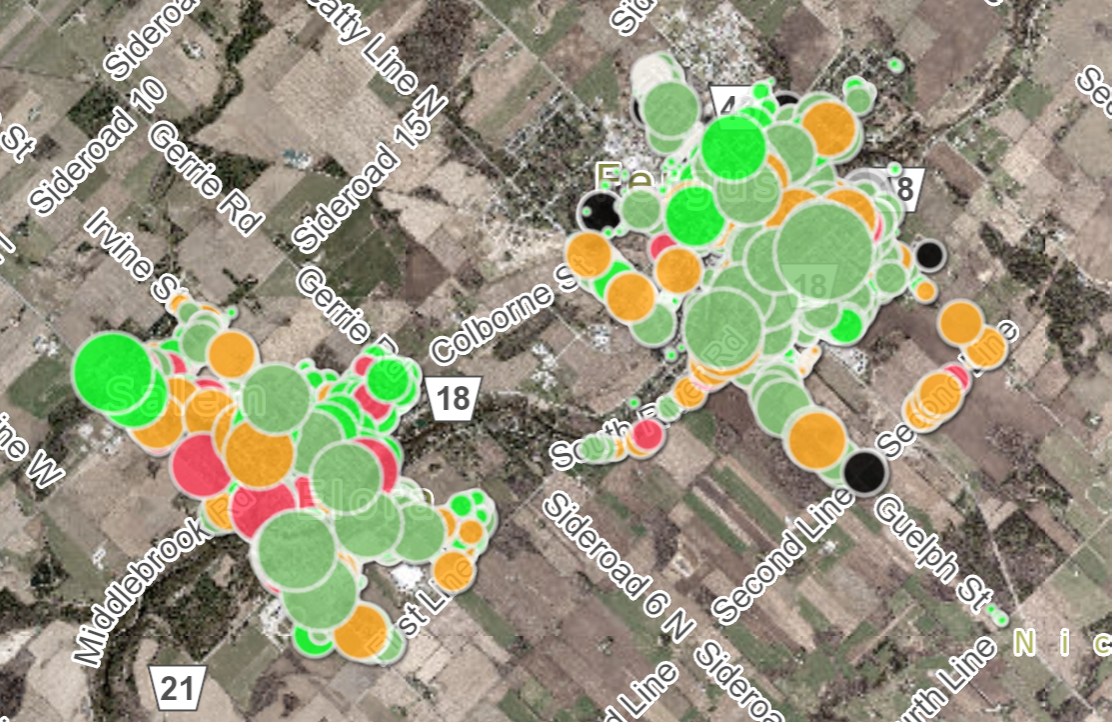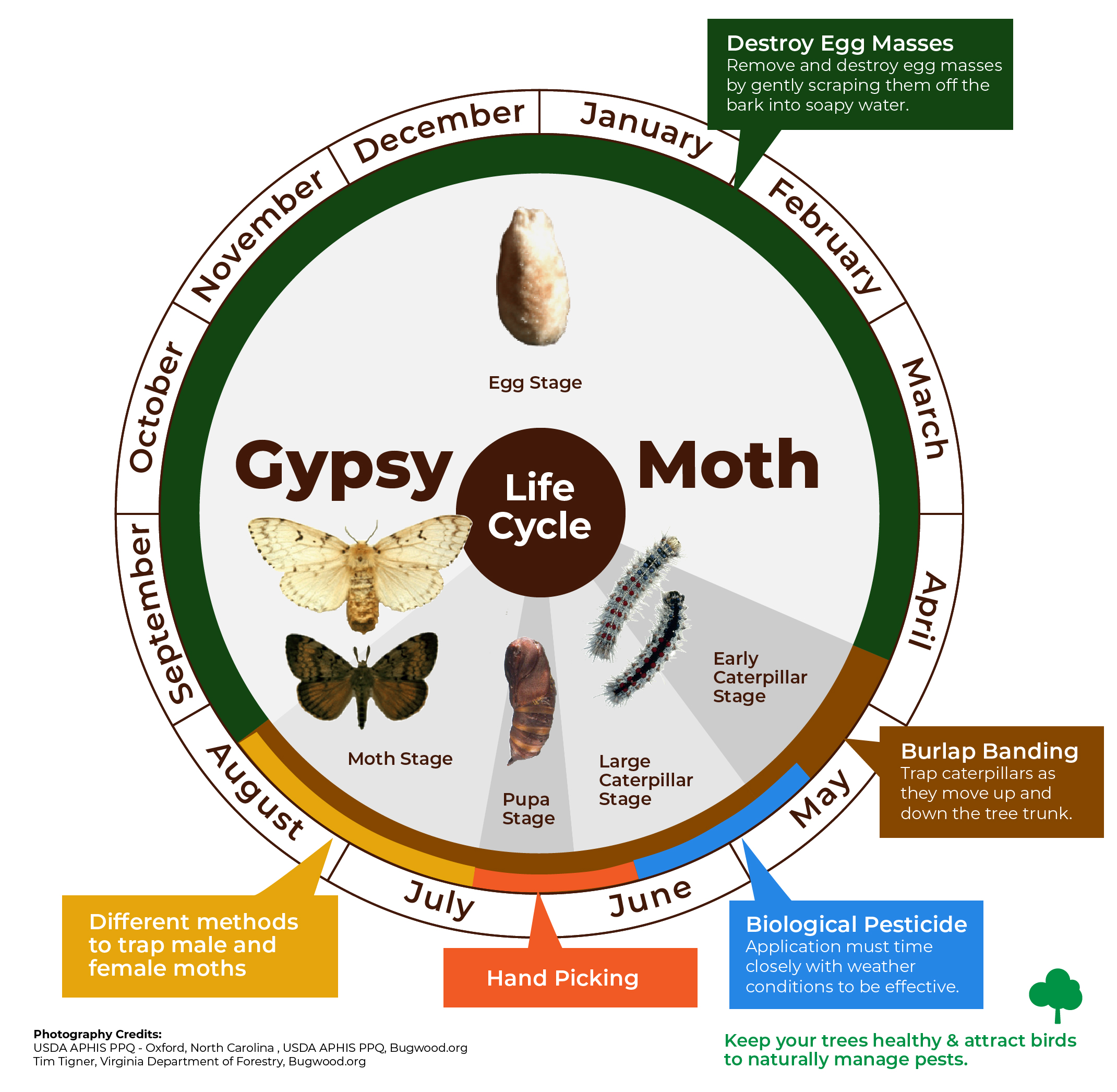The County of Wellington provides leaf and yard waste material collection in urban areas only.
For more information on the County's leaf and yard waste program, visit the County's website.
New Toilet Rebate Program
The Township of Centre Wellington's Infrastructure Services Department has launched a new Toilet Rebate Program!
Available to residents and small businesses, a rebate of $75 (including HST) is being offered for the replacement of an inefficient toilet (greater than 6L flush) with a more water-efficient model! Certain conditions apply, so be sure to read the Terms and Conditions before filling out an application to ensure eligibility.
The Township of Centre Wellington is committed to protecting and maintaining our municipal trees. Trees provide natural benefits and improve the look of parks, cemeteries, roadsides and boulevards. The Township is responsible for trees on municipal property only.
The goal of The Public Forest Policy is to enhance the condition of public trees and the quantity of public tree canopy cover in the Township.
Centre Wellington's Tree Inventory Dashboard

County of Wellington Leaf and Yard Waste Program
The County of Wellington provides leaf and yard waste material collection in urban areas only.
For more information on the County's leaf and yard waste program, visit the County's website.
Due to inadequate space for the current demand of this program, the Township has decided to suspend the Commemorative Tree Program indefinitely until more space becomes available in future development areas.
For questions or concerns, please contact Parks and Recreation.
Lymantria dispar dispar (LDD) Moth
What is a LDD?
LDD which was formerly know as European Gypsy Moth, is a non-native defoliating insect that feeds on a variety of tree species found in Centre Wellington and throughout North America. When populations are high, they can eat all the leaves on a tree in a short amount of time. The Township of Centre Wellington is actively monitoring the infestation thresholds based on the principles of Integrative Pest Management to determine if and when aggressive management strategies are appropriate. LDD is firmly established in North America and was first detected in Ontario in 1969. For more in-depth information about LDD visit Ontario.ca(External link).
LDD infestation severity follows a 7-10 year cycle. This makes predicting infestation rates and overall impact to residents and the Township of Centre Wellington challenging.
Lifecycle of the LDD Moth

LDD like to eat the leaves on trees while they are in their caterpillar stage. They strip the leaves until early summer, when they enter their moth stage. They prefer Oak trees but will eat the leaves of any hardwood tree such as oak, ash, birch or elm. Look for trees with many caterpillars and not a lot of leaf coverage.
Symptoms and Damage
LDD larvae chew holes in leaves or devour entire leaves so that only leaf veins remain. If severe outbreaks occur, trees and shrubs are completely defoliated over large areas. In most cases trees are able to produce a new crop of leaves over the summer and make a full recover, however repeated severe defoliation will lead to mortality. In addition, gypsy moth infestation can be a contributing factor in tree mortality for trees that are weakened by secondary pests, drought, and poor growing conditions.
Identification
When mature, LDD caterpillars are approximately 50 mm long, hairy and dark-coloured. Five pairs of blue dots and six pairs of red dots line their fuzzy backs. Male LDD moths are mainly brown and females are mainly white. Female moths are also flightless and often lay eggs inside bark cracks and crevices or on the underside of tree branches, as well as sheltered spots on rocks, logs or lawn furniture. Spongy egg masses can be observed on trunks and branches of infected trees from August-May
Public trees are trees owned by the Township of Centre Wellington on public land. This includes all park/greenspace trees, street trees (boulevard trees and those within the road allowance), and boundary trees.
When caterpillars are active (late May to late July), controlling LDD on public trees can be done by squishing or crushing caterpillars, or by removing caterpillars and placing them in soapy water to drown them. Care must be taken when handling the caterpillars as some individuals are allergic to the coarse hairs that cover and protect their bodies. It is recommended that gloves are worn when handling the caterpillar. Approximately 9-15 days after the caterpillars enter the pupa stage, moths appear. Removing egg mases by placing them in soapy water for two (2) days is also an effective method of control.
Using burlap as a control measure on public trees is not permitted at this time by the Township of Centre Wellington. Spraying public trees for pests such as gypsy moth can only legally be done a done by a license pesticide applicator under the direction of Township staff following all requirements of Ontario Pesticide Act.
Private trees are trees located on private property not owned by the Township of Centre Wellington. This includes trees within your backyard, behind the property line in your yard, and privately owned woodlots.
Treating LDD on private trees can be done by squishing or crushing caterpillars, removing caterpillars by placing them in soapy water to drown them, spraying with pesticide following all label requirements and safety precautions. BtK is a common household pesticide used to control caterpillars and can be purchased at most local garden centers and hardware stores. Burlap bands attached to the trunk of trees and checked twice a day to remove caterpillars seeking shelter from the sun is also an option.
If caterpillar infestation was observed on trees the following spring/summer egg masses may be noticeable attached to the bark of those same trees from August-May. Egg masses are a white/beige colour with a hairy exterior. Egg masses can contain several hundred eggs so removing them is the most effective method for preventing an infestation from occurring the following year. To remove and dispose of egg masses, scrape the masses into a bucket of warm soapy water with a putty knife, trowel, paint stick, or any other object with a smooth, flat surface. This provides the easiest way to remove all eggs within the egg masses quickly and effectively. Leave the eggs in the bucket of soapy water for 48 hours to break down the outer protective layer of the eggs to ensure they don’t hatch next year. Scraping the egg masses onto the ground or attempting to crush them is not an effective strategy and may result in some of the eggs hatching the following season.
Egg Mass Removal Video: How to Remove Gypsy Moth Egg Masses - YouTube(External link)
Email Parks with your LDD sightings including your address, information on affected trees, and estimated number of caterpillars/moths/egg masses.
Here's what you can do to protect your trees and help control the spread:
Oak Wilt is an invasive vascular disease of oak trees, which is caused by the fungus Bretziella fagacearum. The fungus grows on the outer sapwood of oak trees, causing the flow of water and nutrients to be restricted. Some species of oak trees can die within a year of infection.
In June 2023, the first confirmed detection of Oak Wilt was discovered in Ontario.
Best practice is to cease all pruning/maintenance activities of oak trees until the fall and not move firewood.
Learn more about Oak Wilt - Invasive Species Centre - Oak Wilt
Public Tree Permit Application
To apply for a Public Tree Permit, click the link below:
If you have a question or concern related to a municipal tree, please contact our Infrastructure Services customer service staff by email.
You can also Report a Problem using our online reporting tool here.
The Infrastructure Services Department encourages, where possible, mulching leaves with a mower. Valuable nutrients will be returned to the soil in a form that can be used by plants. Spreading the mulched leaves in flowerbeds will help prevent frost from damaging sensitive perennials.
Leaf composting is also encouraged. Using standard composting methods, add layers of alternating green (green leaves and plants) and brown materials (dried leaves and plants) to your compost pile and layer with garden soil or compost. In the spring, you will have a nutrient rich supply of compost to use on your lawn and garden.
Using mulch and compost in your garden and flowerbeds will help conserve soil moisture and will return nutrients to the soil providing beautiful gardens that will require less watering and maintenance.
Trees on Public Property - By-Law
On July 18, 2022, Council authorized execution of a By-Law to enhance the urban tree canopy through the preservation of existing tree cover by strengthening tree protection measures, and controlling tree planting costs by formalizing compensation collected by the Township for the unlawful injury or removal of Township owned trees.
Trees provide significant ecosystem services to the Centre Wellington community. The continued preservation and protection of trees within the Township is an important measure to aid in the fight against climate change, as well as maintain the character and beauty of our community.
Trees on Public Property By-Law
Tree planting and tree maintenance is either contracted out or undertaken by staff on an annual basis. If you wish to have a tree planted on a piece of municipal property (boulevards, roadsides etc.) adjacent to your property, contact the Infrastructure Services Department and your request will be reviewed.
Centre Wellington participates in the County's Green Legacy program
Centre Wellington's Commemorative Tree Program
Township staff will evaluate any potentially unsafe, dead or diseased tree on municipal property and recommend a specific course of action. If one of these trees is near a home and requires removal, the resident will be notified. However, if the condition of the tree requires immediate action, the Township is authorized to immediately remove the limb or tree at their discretion. Trees will be trimmed if they are blocking signs or signal lights.
Community Services - General Inquiry
550 Belsyde Ave E, Fergus,
Ontario, Canada, N1M 2W5
Phone: 519.846.9691 x903
Email Us
Sign up to our Newsletter
Stay up to date on the city's activities, events, programs and operations by subscribing to our eNewsletters.
This website uses cookies to enhance usability and provide you with a more personal experience. By using this website, you agree to our use of cookies as explained in our Privacy Policy.